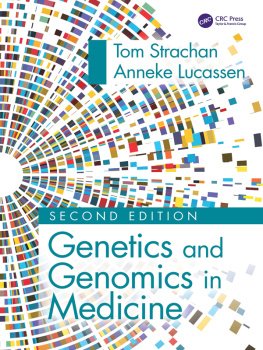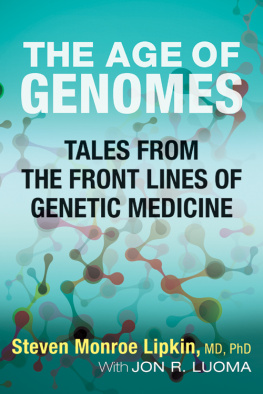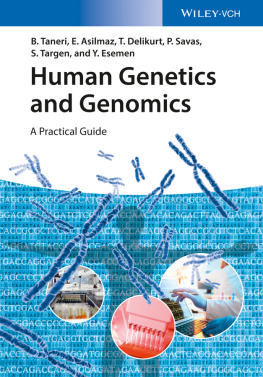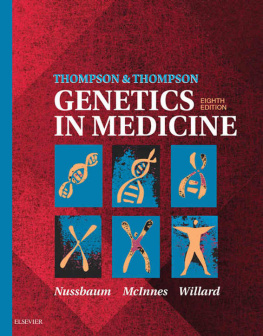Tom Strachan - Genetics and Genomics in Medicine
Here you can read online Tom Strachan - Genetics and Genomics in Medicine full text of the book (entire story) in english for free. Download pdf and epub, get meaning, cover and reviews about this ebook. City: Boca Raton, year: 2022, publisher: CRC Press, genre: Science. Description of the work, (preface) as well as reviews are available. Best literature library LitArk.com created for fans of good reading and offers a wide selection of genres:
Romance novel
Science fiction
Adventure
Detective
Science
History
Home and family
Prose
Art
Politics
Computer
Non-fiction
Religion
Business
Children
Humor
Choose a favorite category and find really read worthwhile books. Enjoy immersion in the world of imagination, feel the emotions of the characters or learn something new for yourself, make an fascinating discovery.
- Book:Genetics and Genomics in Medicine
- Author:
- Publisher:CRC Press
- Genre:
- Year:2022
- City:Boca Raton
- Rating:3 / 5
- Favourites:Add to favourites
- Your mark:
Genetics and Genomics in Medicine: summary, description and annotation
We offer to read an annotation, description, summary or preface (depends on what the author of the book "Genetics and Genomics in Medicine" wrote himself). If you haven't found the necessary information about the book — write in the comments, we will try to find it.
The second edition of this textbook written for undergraduate students, graduate students and medical researchers, Genetics and Genomics in Medicine explains the science behind the uses of genetics and genomics in medicine today, and how it is being applied.
Maintaining the features that made the first edition so popular, this second edition has been thoroughly updated in line with the latest developments in the field. DNA technologies are explained, with emphasis on the modern techniques that are revolutionizing the use of genetic information in medicine and indicating the role of genetics in common diseases. Epigenetics and non-coding RNA are covered in-depth as are genetic approaches to treatment and prevention, including pharmacogenomics, genetic testing, and personalized medicine. A dedicated chapter charts the latest insights into the molecular basis of cancers, cancer genomics and novel approaches to cancer detection. Coverage of genetic testing at the level of genes, chromosomes and genomes has been significantly expanded and updated. Extra prominence has been given to additional genomic analyses, ethical aspects, and novel therapeutic approaches. Various case studies illustrate selected clinical applications.
Key Features
- Comprehensive and integrated account of how genetics and genomics affect the entire spectrum of human health and disease
- Exquisite artwork illuminates the key concepts and mechanisms
- Summary points at the end of each chapter help to consolidate learning
- For each chapter, an abundance of further reading to help provide the reader with direction for further study
- Inclusive online question bank to test understanding
- Standard boxes summarizing certain key principles in genetics
- Clinical boxes summarizing selected case studies, pathogenesis mechanisms or novel therapies for selected diseases
This book is equally suited for newcomers to the field as well as for engineers and scientists that have basic knowledge in this field but are interested in obtaining more information about specific future applications..
Tom Strachan: author's other books
Who wrote Genetics and Genomics in Medicine? Find out the surname, the name of the author of the book and a list of all author's works by series.






